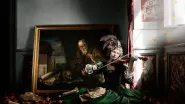The V&A Parasol Foundation Prize for Women in Photography has announced its 2025 winners. Now in its third year, the prize continues to highlight exceptional work by women in a field where their contributions have often been undervalued. Open to emerging and mid-career photographers, the prize encourages artists to respond to a central theme each year. This year, submissions addressed the theme of Unity.
Unity asks how people and communities connect. It explores how shared experiences can build understanding, resilience, and care. The four selected artists each bring a distinct vision, shaped by identity, history, and a strong sense of place. Their work was exhibited at the Copeland Gallery in London during the Peckham 24 Festival from May 16 to May 25, 2025.
Each winner receives a bursary, mentoring support, and the opportunity to share their work with a broad public audience. These resources are crucial in a creative sector where women continue to face barriers to visibility, funding, and representation. The prize not only offers recognition but also builds a platform for long-term artistic growth.
Spandita Malik

Spandita Malik's project, titled Jāḷī - Meshes of Resistance, is rooted in collaboration. Malik photographs women in rural India, prints their portraits on fabric, and then invites them to embroider directly onto the image. The result is a layered portrait that becomes both personal and political. Through embroidery, these women reclaim ownership over how they are seen. The act of stitching becomes a form of resistance, healing, and self-expression. Malik's work combines photography with textile art. It draws attention to craft traditions that have long been associated with women but often excluded from mainstream art spaces. By working with her subjects instead of simply photographing them, Malik challenges ideas of authorship and control in image-making.
Tshepiso Moropa

In her series Ditoro, which means "dreams" in Setswana, Tshepiso Moropa explores memory, spirituality, and African identity. Her images are richly layered, often using collage and symbolic materials to create a dreamlike atmosphere. Moropa brings together family photographs, religious motifs, and natural forms to reflect on personal and ancestral memory. Her work offers a deeply introspective view of Black womanhood and cultural heritage. It challenges the viewer to engage with traditions and histories that are often misrepresented or ignored in Western contexts. Through her creative process, Moropa builds bridges between generations, spaces, and ways of seeing.
Morgan Levy

Morgan Levy's Spark of a Nail focuses on the lives of female and non-binary workers in the United States. The photographs are quiet and intimate, offering a glimpse into the everyday routines of people who are often overlooked. Levy works in black and white, using careful composition to capture gestures of care, fatigue, and resilience. Her images move beyond traditional representations of labor. Instead of portraying strength through productivity, Levy shows strength in rest, stillness, and connection. Her project reflects a growing awareness of how work shapes identity, and how solidarity can be found in shared experiences. It is a gentle but powerful reflection on community and survival.
Tanya Traboulsi

Tanya Traboulsi's Beirut, Recurring Dream documents moments of calm and joy in a city marked by crisis. Rather than focusing on conflict or destruction, she photographs the ordinary moments that make life bearable. People sit together, light moves across a room, a quiet street hums with everyday life. These images reveal the emotional complexity of living in a place shaped by uncertainty. Traboulsi's work resists the dominant media narratives that often flatten Beirut into a symbol of instability. Her photographs insist on nuance. They show that beauty and community do not disappear in times of hardship. Instead, they become even more vital.
Together, these four projects offer a multifaceted view of unity. They show that connection can be found in tradition, labor, memory, and small acts of resistance. The artists take different approaches, but all create work that is thoughtful, emotionally rich, and socially engaged. The V&A Parasol Foundation Prize plays an important role in changing the landscape of contemporary photography. By investing in women artists, it helps shift long-standing inequalities and opens up space for new voices to emerge. This is not just about adding more women to existing systems. It is about rethinking how photography can represent the world and who gets to shape that representation. To learn more about the prize and this year's winners, visit the V&A website.






